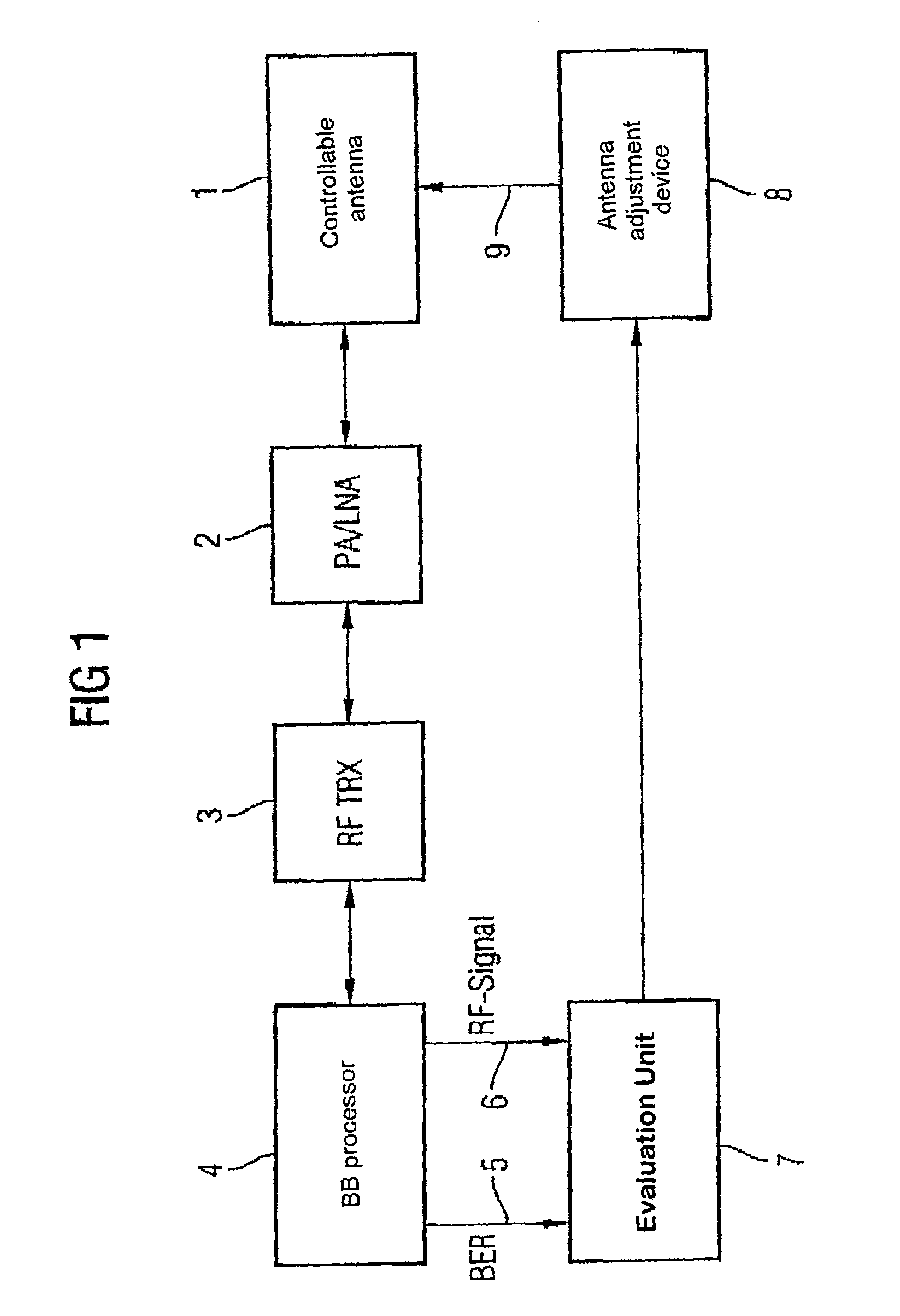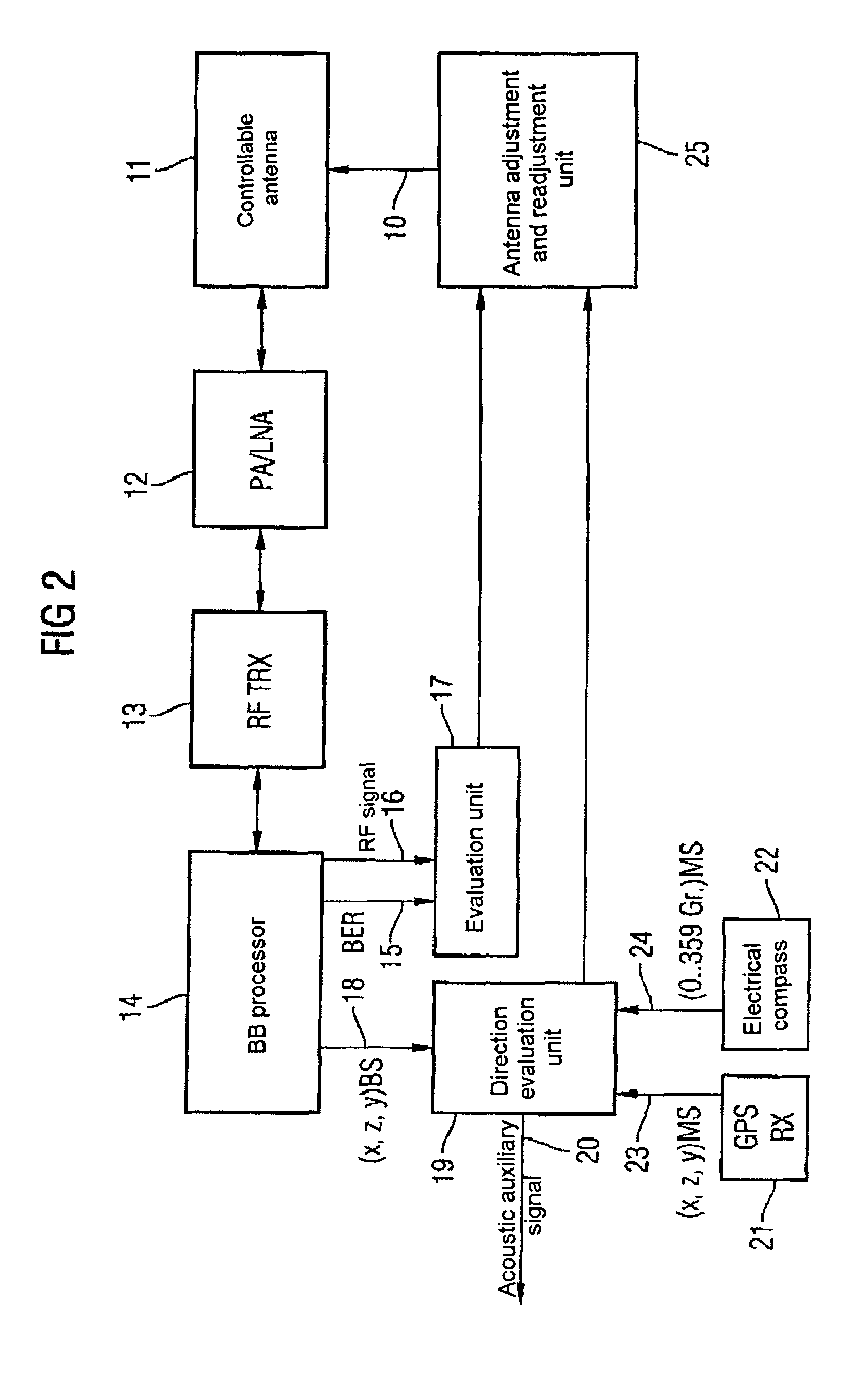Method for reducing the radiation load by a mobile radio terminal with directional emission, and a mobile radio terminal with directional emission
a mobile radio terminal and radiation load technology, applied in the direction of radio transmission, transmission, substation equipment, etc., can solve the problems of unsatisfactory radio-frequency irradiation of the head together, local temperature increase in the head, and possible human health effects that have not yet been scientifically verified, etc., to achieve convenient call-up, improve the rate and accuracy of adjustment, and improve the effect of setting speed
- Summary
- Abstract
- Description
- Claims
- Application Information
AI Technical Summary
Benefits of technology
Problems solved by technology
Method used
Image
Examples
Embodiment Construction
[0055]According to the block diagram illustrated in FIG. 1, an apparatus according to the invention and based on the first exemplary embodiment is designed as follows: An antenna 1 whose directional characteristic is controllable is electrically connected bidirectionally to an amplifier block 2. The amplifier block 2 is itself bidirectionally connected to a radio-frequency transmitter / receiver circuit 3, also referred to as an RF transceiver (RF-TRX). The RF transceiver 3 is also bidirectionally connected to a baseband processor 4 (BB processor). The output variables from this baseband processor 4 are the bit error rate 5 (BER) and the field strength 6 (RF signal) of the received signal, and these variables are supplied as input variables to an evaluation unit 7. The output of the evaluation unit 7 is connected to an antenna adjustment device 8, which in turn supplies a control signal 9 to the control input of the controllable antenna 1.
[0056]The antenna 1 with an adjustable directi...
PUM
 Login to View More
Login to View More Abstract
Description
Claims
Application Information
 Login to View More
Login to View More - R&D
- Intellectual Property
- Life Sciences
- Materials
- Tech Scout
- Unparalleled Data Quality
- Higher Quality Content
- 60% Fewer Hallucinations
Browse by: Latest US Patents, China's latest patents, Technical Efficacy Thesaurus, Application Domain, Technology Topic, Popular Technical Reports.
© 2025 PatSnap. All rights reserved.Legal|Privacy policy|Modern Slavery Act Transparency Statement|Sitemap|About US| Contact US: help@patsnap.com



